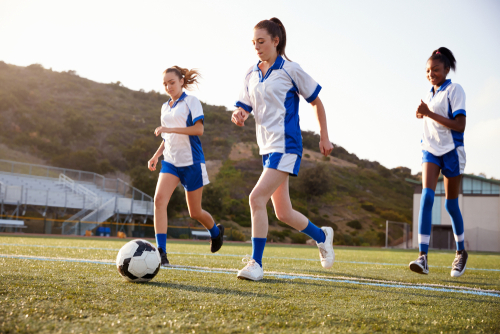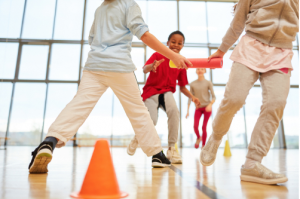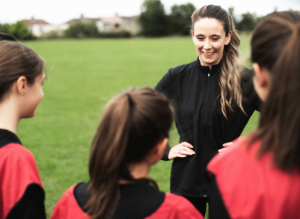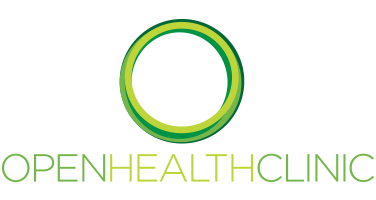
29 Oct Common Sports Related Problems and Injuries for Children
PE Problems – Common Sports-Related Problems and Injuries for School Children
Summer ending can only mean one thing for young ones; the beginning of a new school year! It’s that time of year for them to put behind the sunny weather, lie-ins, and late nights, and prepare for another year of hard work. Going back to school can be pretty miserable for some children, however, for some its an excellent opportunity to catch-up with friends that they might not have seen much of in the summer, make new friends, or have a fresh start with brand new motivation for a successful year. Returning to school also means the return of school dinners, uniforms, homework, and weekly exercise in PE.
PE is a much-loved subject by many students across the country. Sporty students will wait all week for an hour or two of playing a variety of different sports or completing a range of exercise. Sport at any level poses a risk of injury or a risk of an ongoing problem being made worse from exercise from playing sport. When playing sport each week as children do in PE school, it will make it more prominent to them when an issue is detected. As a parent or carer of children, it’s important that you are vaguely aware of these problems or injuries. Due to the school year starting, we have provided you with the most common sports-related problems or injuries, what they are, and how to support them.

Overuse Injuries
Overuse injuries are injuries that are caused by repetitive trauma on a muscle or joint. These injuries are common in school children due to the weekly exercises and occasional lack of knowledge of the sport or exercise they are completing. Overuse injuries commonly stem from training errors or technique errors. Training errors occur when too much physical activity is taken on too quickly. If your child or children you take care of haven’t exercised much over the summer, ensure to advise them to take it slow to begin with during PE. Technique errors are the improper use of sporting equipment. Ensure your child or the child you take care of listens to their teacher’s instructions to minimise the risk of obtaining an overuse injury. PE teachers are trained to ensure children can play sport and exercise without obtaining an injury, so it is important that they listen carefully to what their teacher instructs them.
The most common symptoms of overuse injuries include a gradual onset of pain, aches, no history of a direct injury, swelling, point tenderness, and stiffness. If a child is experiencing any of these problems, they should make it apparent to you or a teacher. If a child already has an overuse injury, it is important that you take a break from stressing the affected body part. An overuse injury should not prevent a child from playing sports or exercising as a whole. The affected child should take a break from stressing the body part until it has healed but continue exercising different parts of the body.
Osgood-Schlatter Disease
Osgood-Schlatter Disease is swelling and irritation of the growth plate (a layer of cartilage) at the top of the shinbone. The growth plate is very near to the end of the bone where most of the growth happens and the end of the bone is weaker and more at risk of injury. Osgood-Schlatter disease occurs during the growth spurt stage of puberty and more commonly in children who take part in sports or activities that involve a lot of running and jumping. During a child’s growth spurt stage, the bones, muscles, and tendons all grow at different paces. In Osgood-Schlatter Disease, the tendon that connects the shinbone to the kneecap pulls on the growth plate at the top of the shinbone. This process is repeated during activities and sports, which causes injury and pain in the growth plate.
Osgood-Schlatter Disease is, in fact, an overuse injury, therefore, the treatment and coping methods are the same as other overuse injuries. The disease stops when the child has finished growing, however, pain levels can fluctuate. Limiting activities that cause pain is usually what is recommended to help recovery. To keep the leg muscles strong and flexible whilst they recover, physical therapy is occasionally recommended. Besides physical therapy, other things are recommended for children who play sports to reduce the pain, such as wearing shock-absorbing insoles, placing ice on the knee for 15-minutes after playing sports, stretching before sports, wearing protective kneepads, and placing a warm washcloth on the knee 15-minutes before sports.
Scoliosis
Scoliosis is a prominent sideways curvature of the spine that occurs most often during the growth spurt stage in puberty. Common known causes of scoliosis are cerebral palsy and muscular dystrophy, however, the cause of most scoliosis cases are unknown. About 3% of the population of adolescents have scoliosis. The majority of scoliosis cases are mild, however, they may become more severe as the child grows up. Signs and symptoms of scoliosis are uneven shoulders, one shoulder blade that appears more prominent than the other, uneven waist, and one hip higher than the other. If you detect any of these symptoms in your child or a child, it is important that you take them to see a doctor or advise their care to take them to see a doctor.
If your child already has scoliosis, they can still play sports and exercise in PE, however, only for specific sports and exercises. Sports such as gymnastics, rugby, and weight lifting are all discouraged for those with scoliosis as they can put an immense deal of stress on the bones in the lower back. Sports which are non-physical such as basketball, swimming, and cycling are all recommended for those with scoliosis. Swimming and cycling are highly recommended as they require a strong core. Your core muscles include your abdominal muscles, hip muscles, and lower back muscles. When these muscles are conditioned and are equal in strength, they work with each other to stabilise and strengthen your spine, constructing an anatomical brace.
Severs Disease
Severs disease is a pain in one or both heels whilst walking or running. The pain comes from the area situated between the sections of bone that make the up the heel. Severs disease is again caused during the growth spurt stage when the tendon at the back of the heel pulls at the heel bone. This can cause pain for children, causing them to limp or walk on their toes. Severs disease usually affects boys between eight to ten years old, girls between ten and twelve years old, children involved in a growth spurt, and children who take part in a lot of sporting activity involving running and jumping.
Similarly to Osgood-Schlatter disease, Severs disease will stop once a child finishes growing. Until then, there are specific things that can be done to relieve the pain before and after taking part in sport. Sports that involve running or jumping are not recommended for children with Severs disease, however, there certain things that can be done to ease the pain. One of these is applying heat to the affected area on a warm cloth and cooling the affected area with ice after, both times for 15 minutes. It is also important that the child elevates the leg when the affected area painful, especially after sports.

Physiotherapists Ascot
The Openhealth Clinic offers treatments for people of all ages for pain such as back pain, shoulder pain, neck pain, knee pain, hip pain, and more. If you are experiencing any unusual pain or have been recommended by a doctor for treatment, visit the Openhealth Clinic for specialist treatments such as osteopathy and physiotherapy in Ascot. If your child is experiencing any of the above problems, feel free to call us so we can find the most effective way to support your child with their problem or injury.
Jack is part of the marketing team and enjoys helping patients understand the treatments offered at Openhealth and the positive effect that Osteopathy & Physiotherapy can have on peoples lives.



Sorry, the comment form is closed at this time.